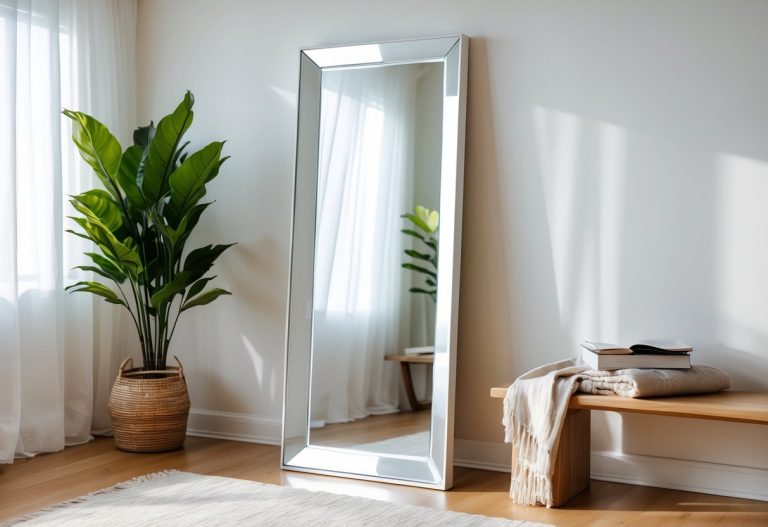How to Clean Mirrors at Home Easily and Streak-Free
Cleaning mirrors at home can feel tricky, but it doesn’t have to be. The best way to get your mirrors spotless is to use a simple mix of water and vinegar, applied with a soft cloth. This method helps avoid streaks and leaves your mirror shiny without any lint left behind.

You probably want a quick and easy routine that works every time. Using common household items like vinegar, water, and a cloth you already have can save you money and give great results. Plus, it’s gentle on your mirrors and safe for your home.
In this post, you’ll learn simple steps to clean your mirrors without extra fuss. You’ll also get tips on what to avoid so your mirrors stay clear and streak-free longer.
Best Practices for Cleaning Mirrors

To get a clear and streak-free mirror, you need the right supplies and a simple cleaning process. Avoid common errors that leave spots or streaks by following some easy tips.
Essential Supplies for Streak-Free Mirrors
Start with a soft microfiber cloth. It won’t scratch your mirror and helps prevent lint and streaks. Avoid paper towels because they can leave fibers behind.
Pick a cleaning solution like white vinegar mixed with water, a glass cleaner, or plain water for light cleaning. Spray bottles help you apply liquids evenly.
If your mirror is very dirty, you can use a drop of oil-free dish soap first. Keep a dry microfiber cloth handy for drying and buffing after cleaning.
Step-by-Step Mirror Cleaning Process
Spray your cleaner lightly on the mirror or a cloth. Avoid soaking the mirror to prevent liquid from seeping behind it.
Wipe the mirror with a microfiber cloth using small circles or an “S” shape. This pattern catches dirt well and avoids streaks.
For stubborn spots, dampen the cloth and gently rub the area. After cleaning, use a dry cloth to remove any moisture and shine the glass.
Common Mistakes to Avoid
Don’t use harsh chemicals or abrasive cleaners, which can damage the mirror’s surface.
Avoid using too much liquid or spraying it directly on the mirror’s edges. This can cause damage over time.
Don’t clean in direct sunlight. Heat dries cleaner too fast, leaving streaks.
Finally, don’t reuse dirty cloths since they will spread dirt and make streaks worse. Always use clean cloths for the best results.
Maintaining Clean Mirrors at Home

Keeping your mirrors clean means preventing smudges and using safe cleaning solutions that won’t damage the surface. This helps your mirrors stay shiny longer without much effort.
Prevention Tips for Smudges and Spots
To stop smudges, avoid touching mirrors with your fingers. Oils from your skin leave marks that can be hard to clean later. Use a soft cloth if you need to adjust or wipe the mirror gently.
Keep your bathroom well-ventilated to reduce moisture buildup. Steam can cause spots and streaks on mirrors. After showers, open a window or use a fan to dry the air.
Regular dusting with a dry microfiber cloth helps prevent dirt buildup. Also, avoid spraying cleaning liquids directly on the mirror. Instead, spray onto the cloth to reduce drips that can cause streaks or damage the frame.
Safe Natural Cleaning Solutions
You can make a simple, natural cleaner using equal parts water and white vinegar. Pour this into a spray bottle for easy use. Vinegar breaks down grease and removes water spots without harsh chemicals.
If your water is hard (has minerals), use distilled water in your mixture. This helps avoid new spots forming as you clean.
Spray the solution lightly on a lint-free cloth. Wipe the mirror in circular motions, then use a dry cloth to buff for a streak-free finish. Avoid using paper towels since they can leave behind fibers.
For stubborn spots like hairspray or tough dirt, dab rubbing alcohol on a cloth and wipe gently before using the vinegar mixture. This prevents damage and keeps your mirror clear.



